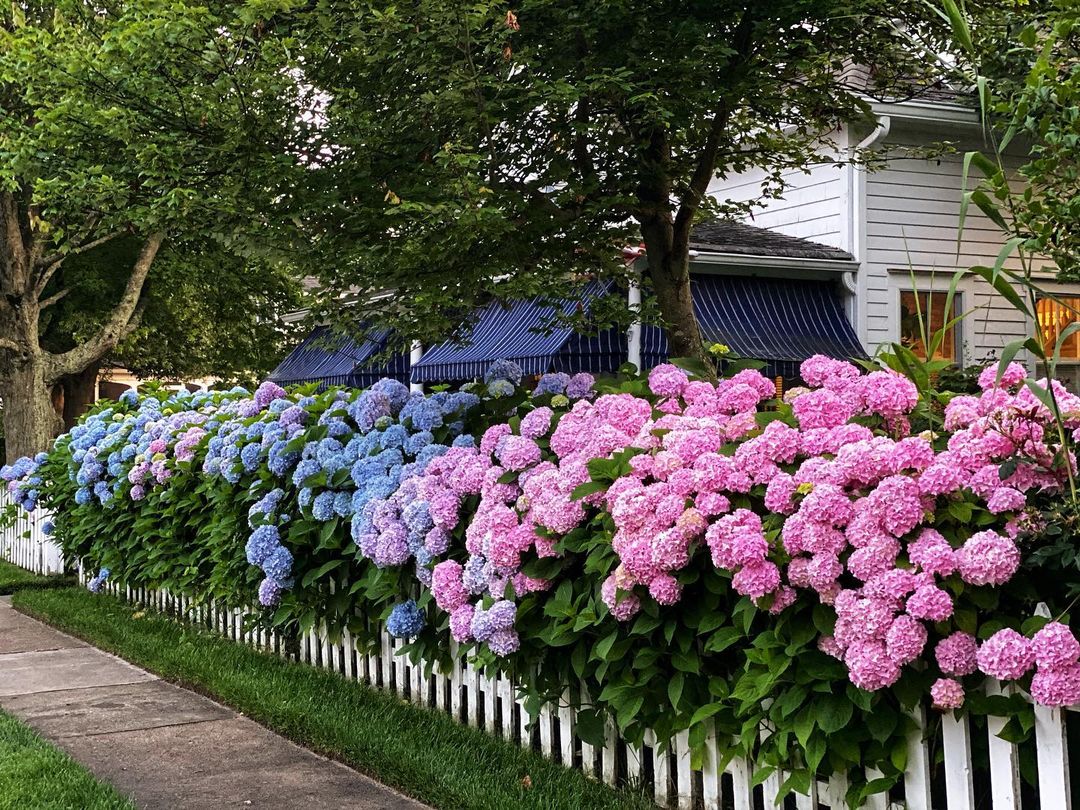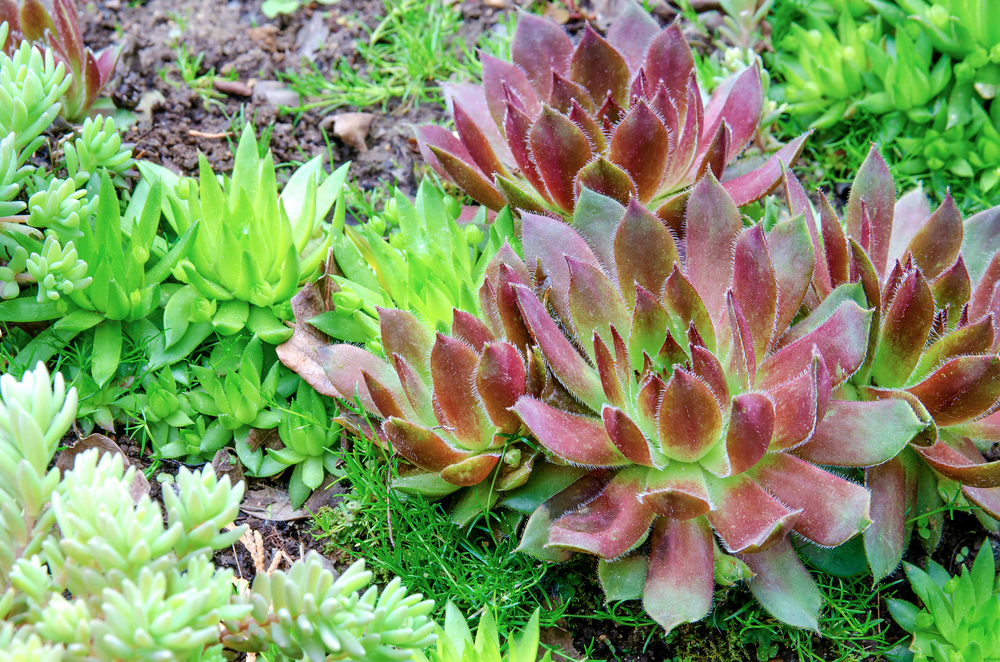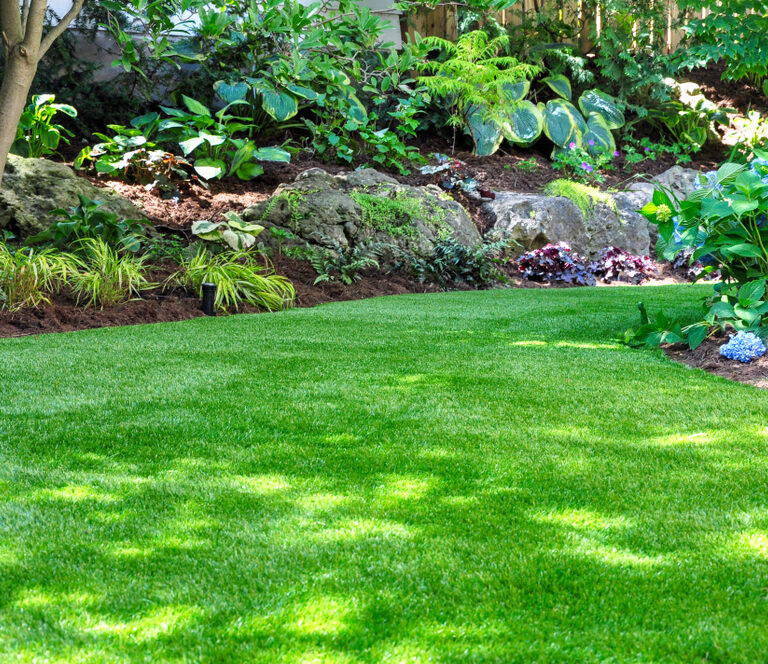If you’re like most people, you probably want to have a beautiful garden teeming with healthy-looking plants. Unfortunately, starting and maintaining a garden is easier said than done, especially if your property doesn’t exactly have the best environment for plants to grow.
The good thing is that if your soil is bad, you can remedy it by adding some structure and nutrients to it. But if many parts of your yard don’t get enough sun, you’ll have to stick to planting low light outdoor plants, which you’ll see several examples of below.
Foamflower
Named foamflower because it looks like it’s covered in foam at first glance, this hardy and eye-catching perennial is characterized by three-pronged, heart-shaped foliage and tall, erect stems (about 12 inches) of white or light pink blossoms. It only needs about three to five hours of dappled sunlight per day.
A tea made from the plant can actually be used to treat urinary problems and a variety of other conditions, but be sure to look up how to do it right if you don’t want to risk getting a stomach ache. Because it grows really fast as long as the soil is moist and well-drained, it would be a great ground cover option especially if your shady lawn or shade garden has bare spots that need to be filled in.
Japanese Forest Grass
Japanese Forest Grass is an excellent choice if you’re looking to add more character to your very flat lawn since it has lush, arching blades that sweep from the base and gently fall to the ground. One of the most graceful-looking plants, it will make your lawn or garden look more elegant if used as ground cover. Furthermore, it’s not invasive at all.
When exposed to a lot of sunlight, the leaves slowly fade into a golden color. If you want to maintain its green color, better keep it under the shade. While it typically grows in Zones 5 to 9, it can grow in Zone 4 if it’s heavily protected from the cold along with heavy mulching.
Hydrangeas

Hydrangeas are one of the most beautiful low light outdoor plants you can plant in your yard. They’re very Instagrammable and their flowers are absolutely gorgeous. Depending on the variety, they can also grow up to 15 feet in height, so they would be perfect for your yard if you want some additional privacy in the spring and summer where you’re more likely to relax outside.
It’s best to keep them in shady locations where they can meet with a bit of sunlight for at least three to six hours per day. They prefer some sun in the morning, and none in the afternoon.
Hosta
Hosta is a dark, blue-ish green leafy plant with light yellow borders that fade to white over time. It grows beautiful lavender flowers in the middle of summer and the blooms last until fall depending on the variety. It’s actually a favorite among gardeners since you can leave it on your front or backyard with little to no maintenance. They only need about four to six hours of partial sun to keep looking their best.
To make sure your hostas continue to thrive, plant them in fertile soil with a slightly acidic pH level. Once they have completely adjusted, they will tolerate practically any soil and will continue to grow for years.
Begonias
A bright, flowering plant that looks very homey, begonias are low light outdoor plants that can thrive in drought-prone areas as long as they’re planted in well-drained and fertile soil. Their flowers come in a variety of shades, such as bright red, faded pink, pearly white, yellow-orange, and a combination of multiple colors. You’ll normally see them planted in a pot, although they can be planted in hanging baskets as well.
Most varieties of begonias grow in Zones 9 to 11, but the begonia grandis varieties can survive in Zones 6 to 9.
Succulents

Rising in popularity since 2007 and popular among millennials, succulents are incredibly hardy. You probably have seen a lot of photos of them indoors, but they’re absolutely stunning outdoors as well. If you don’t want to be a full-time guardian of your plant babies, you should definitely give these plants a chance. They don’t need to be watered very often, thanks to their thick and fleshy tissue that stores water.
And if you plant a succulent like Aloe, you’ll have easy access to burn remedy, as well as a remedy for irritable bowel syndrome (IBS).
Impatiens
Impatiens are a cute flowering plant that look very welcoming. You can either plant them in pots, use them as border plants or bedding plants, or hang them in baskets. You can also just buy them from the store and place them on your patio. If you do end up going this route so you can plant them later in the ground, make sure to water them frequently, otherwise, they will wilt. Note that they only thrive in moist, well-drained soil.
They don’t like the sun that much, and are happiest when they get about two to four hours of filtered sun.
Peace Lily
Although not a true lily, peace lilies would still make for a beautiful addition to your shady garden, what with their unique inflorescence that consists of a spike of tiny flowers surrounded by a large, sometimes brightly-colored protective bract.
If you have cats, you’re going to be glad that they’re not a true lily, since true lilies are highly toxic to them. They’re still a little toxic when it’s ingested so make sure your pets and children don’t eat them.
Peace lilies thrive in moist soil, but only water them when the soil is dry, otherwise, they might end up dying from being overwatered. They don’t like the cold at all, so you’re going to have to bring them inside if the temperature drops to below 60°F. Their intolerance to the cold is the reason why they’re mostly kept as indoor plants, but zones 11 and 12, as well as regions that get pretty hot in the spring and summer, can definitely enjoy them as outdoor plants.
Coleus
A tender, tropical evergreen plant, coleus is a perennial that is often planted as an annual, due to the fact that it doesn’t tolerate frost at all. It loves the sun, but it can also thrive in shady areas and anything in between. It’ll add color to dull-looking yards, thanks to its beautiful foliage which comes in different sizes, shapes, and colors. Plant it in early spring and it’ll grow to its full size before the end of the season.
If you live in a cooler area, it’ll need more sun to help it warm up than if you were living in a hotter area, where they will need more shade. Regardless, most varieties thrive with dappled shade or exposure to the morning sun.
Lettuce
You probably didn’t expect to see lettuce here since it’s not an article about the top 10 best salad greens, but hear me out. It grows easily and can mature in just 30 days, and you can plant more 10 to 14 days after harvest–that’s a lot of lettuce for your salads. Not to mention it’s easy to care for, especially if you live somewhere cooler (60 to 70°F is the ideal temperature).
You’ll need to stop planting it before it gets too hot, but you can plant it again towards the end of the summer once the air gets cooler. It needs about six hours of dappled sun daily to thrive, and less if you live somewhere cooler. Just watch out for pets–they can easily destroy your lettuce patch.
Happy Gardening
Low light outdoor plants may barely require any sun, but that doesn’t mean they don’t need your attention at all. Just like anything else that’s living, they need to be looked after so make sure you’re watering them (but don’t drown them) and you fertilize the soil regularly.
And as they say, talking to plants helps them grow, so maybe you can do that when you’re bored out of your mind and finding yourself going on social media to relieve it.
